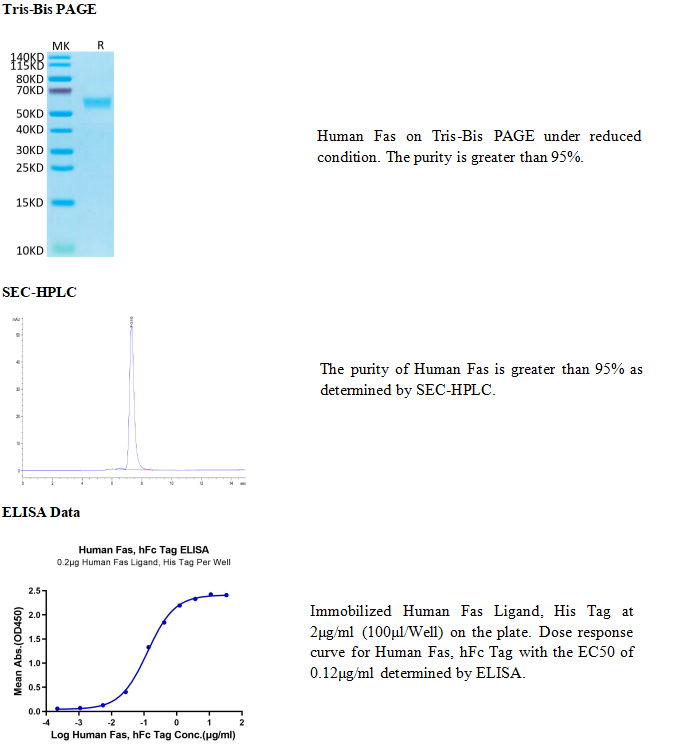Fas, also known as APO‑1 or CD95, belongs to the death receptor subfamily of the TNF receptor superfamily and is designated TNFRSF6. All appear to block the extrinsic apoptosis pathway induced by the Fas ligand (FasL, TNFSF6), a type II transmembrane protein of the TNF family that can be expressed on activated T‑lymphocytes, NK cells and cells in immune privileged sites, or shed in soluble form. Engagement of FAS induces oligomerization of preformed Fas trimers. The activated receptor recruits the adaptor molecule FADD to form the Death‑Inducing Signaling Complex (DISC). Upon activation, caspases in the DISC initiate the apoptotic signaling cascade. Fas is prominent in epithelial cells, hepatocytes, activated mature lymphocytes, virus-transformed lymphocytes and tumor cells. It is an essential mediator in the activation‑induced death of T lymphocytes that terminates the immune reaction. In immune‑privileged tissues, infiltrating Fas‑bearing lymphocytes and inflammatory cells are killed by FasL engagement. Both humans and mice with genetic defects in Fas accumulate abnormal lymphocytes and develop systemic autoimmunity. The Fas pathway also appears to cross‑communicate with the BIM (mitochondrial/intrinsic) apoptosis pathway.
高纯度、高活性、低内毒素、高批间一致性
产品数据

-25 ~ -15℃保存,收到货之后有效期1年。 复溶后, 无菌条件下,-85 ~ -65℃保存,3个月有效期。





